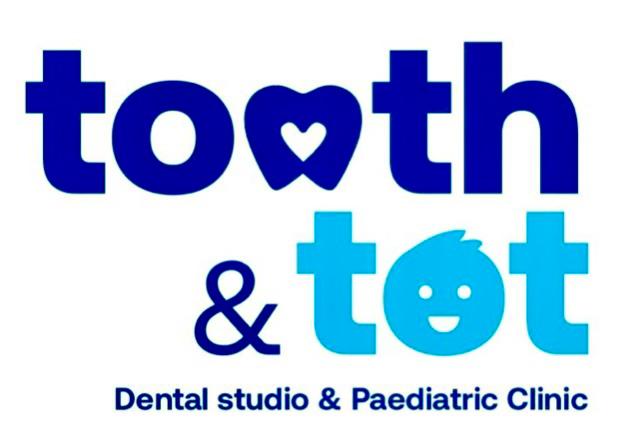+918042781795

This is your website preview.
Currently it only shows your basic business info. Start adding relevant business details such as description, images and products or services to gain your customers attention by using Boost 360 android app / iOS App / web portal.
Description
Treatment of Childhood Asthma and Allergies involves managing symptoms, preventing flare-ups, and ensuring children lead a healthy, active life. Asthma and allergies are chronic conditions that affect the respiratory system, and early intervention, appropriate medication, and lifestyle adjustments can significantly improve a child’s quality of life. Childhood Asthma Treatment Asthma is a condition in which the airways become inflamed, making it difficult for air to flow in and out of the lungs. Asthma symptoms include coughing, wheezing, shortness of breath, and chest tightness, especially during physical activity or when exposed to asthma triggers like allergens, dust, cold air, or respiratory infections. 1. Medications for Asthma There are two main categories of asthma medications: relievers (for quick symptom relief) and controllers (for long-term management). Relievers (Quick-Relief or Rescue Medications): Short-Acting Beta Agonists (SABAs): These medications, like albuterol or ventolin, provide rapid relief of asthma symptoms by relaxing the muscles around the airways and opening them up. These are used during an asthma attack or when symptoms flare up. Anticholinergics: Such as ipratropium, these are sometimes used for emergency relief, especially when combined with a SABA. Controllers (Long-Term Asthma Medications): Inhaled Corticosteroids (ICS): These are the most effective long-term treatment for asthma. Medications like fluticasone, budesonide, and beclomethasone reduce inflammation in the airways and prevent asthma symptoms. Leukotriene Modifiers: Medications like montelukast help block substances that cause inflammation and asthma symptoms. Long-Acting Beta Agonists (LABAs): Medications like salmeterol are often used in combination with inhaled corticosteroids to provide long-lasting symptom control. Combination Inhalers: These contain both an inhaled corticosteroid and a long-acting beta agonist (e.g., fluticasone/salmeterol). They help reduce inflammation and improve airflow. Biologics (for severe asthma): Biologic medications like omalizumab (for allergic asthma) and dupilumab (for eosinophilic asthma) may be used for severe cases that don't respond to other treatments. These are given by injection or IV. 2. Lifestyle and Environmental Changes Identify and Avoid Triggers: Common asthma triggers include: Allergens: Dust mites, mold, pet dander, cockroach droppings, pollen. Irritants: Smoke (tobacco, wood-burning stoves), strong odors, chemical fumes. Respiratory Infections: Colds, flu, or sinus infections can exacerbate asthma symptoms. Weather and Air Quality: Cold air, hot and humid weather, or pollution can worsen asthma. Keeping a symptom diary to track potential triggers and working with an allergist can help identify specific asthma triggers. Breathing Exercises and Pulmonary Rehabilitation: Techniques like diaphragmatic breathing and pursed-lip breathing can help children manage asthma symptoms. These exercises help them control their breathing during an asthma attack. Regular Monitoring: Using a peak flow meter helps parents and doctors monitor a child’s lung function. It can be useful to detect early signs of asthma worsening, so timely intervention can be taken. Vaccinations: Ensuring the child gets the flu vaccine and other recommended vaccinations helps prevent respiratory infections that may worsen asthma. Treatment of Childhood Allergies Allergic reactions in children can affect various parts of the body, including the respiratory system (allergic rhinitis), skin (eczema, hives), or digestive system (food allergies). The treatment aims to reduce allergy symptoms and prevent reactions, particularly in the case of food allergies or environmental triggers. 1. Medications for Allergies Antihistamines: These are commonly used to treat symptoms of hay fever (allergic rhinitis), such as sneezing, runny nose, and itching. First-generation antihistamines (e.g., diphenhydramine) may cause drowsiness. Second-generation antihistamines (e.g., loratadine, cetirizine, fexofenadine) are less likely to cause drowsiness and are commonly used for treating allergic symptoms in children. Intranasal Corticosteroids: Nasal sprays like fluticasone or mometasone reduce inflammation in the nasal passages and are highly effective for allergic rhinitis. Decongestants: Oral or nasal decongestants (e.g., pseudoephedrine) can help reduce nasal congestion, but should be used with caution in children due to potential side effects. They are generally not recommended for long-term use. Leukotriene Receptor Antagonists (e.g., montelukast): These medications block chemicals involved in allergic reactions and are sometimes used for both asthma and allergy treatment. Epinephrine for Severe Allergic Reactions (Anaphylaxis): Children with known food allergies or insect sting allergies may be prescribed an epinephrine auto-injector (e.g., EpiPen). This is essential for managing severe allergic reactions, such as anaphylaxis, which can occur rapidly and be life-threatening. 2. Allergen Avoidance and Environmental Control Identify Allergens: Allergy testing (skin tests or blood tests) can help identify specific allergens such as pollen, pet dander, dust mites, or certain foods. Environmental Modifications: Dust Mites: Use allergen-proof pillow and mattress covers, wash bedding frequently in hot water, and keep humidity levels low in the home. Pets: If the child is allergic to pets, it may be necessary to reduce exposure to animals, particularly in sleeping areas. Pollen: Keep windows closed during peak pollen seasons, use air purifiers, and bathe the child after outdoor activities to remove pollen from their skin and hair. Mold: Address any mold growth in the home, and ensure adequate ventilation in damp areas like bathrooms and basements. Dietary Modifications for Food Allergies: If the child has food allergies, the allergist will provide a strict elimination diet plan to avoid triggering foods. This can include: Reading Labels: Teaching parents and caregivers how to read food labels to identify allergens. Emergency Preparedness: Teaching children, especially older ones, how to manage their allergies, including recognizing symptoms of an allergic reaction and using epinephrine if necessary. 3. Immunotherapy (Allergy Shots or Sublingual Immunotherapy) Allergy Shots (Subcutaneous Immunotherapy): For children with severe allergies (especially pollen, dust, or animal dander), allergy shots may be recommended. This treatment gradually desensitizes the immune system to allergens over time. It’s typically done over a period of 3-5 years. Sublingual Immunotherapy (SLIT): Involves placing a tablet containing allergen extracts under the tongue. It’s typically used for allergies to grass, ragweed, and dust mites. SLIT is easier for home use compared to allergy shots. 4. Emergency Management Plan Action Plan: Have a written asthma and allergy action plan for the child that includes: Steps for managing worsening asthma symptoms. Guidelines for managing food allergies or environmental allergies (e.g., how to use the epinephrine auto-injector). Specific instructions for caregivers, teachers, and family members. Key Strategies for Managing Both Asthma and Allergies in Children: Create a Clean, Allergen-Free Environment: Minimize exposure to allergens and irritants by maintaining a clean home, using air purifiers, and ensuring a dust-free environment. Consistent Medication Adherence: Ensure the child takes prescribed medications consistently, even when they feel fine, especially controller medications for asthma. Regular Follow-ups: Schedule regular follow-up appointments with the healthcare provider to review the child’s asthma and allergy management plan and make necessary adjustments. Parent and School Education: Educate parents, caregivers, and school personnel on recognizing asthma or allergy symptoms, using medications, and responding to emergencies (e.g., how to use the epinephrine auto-injector). Physical Activity: Encourage physical activity, but ensure the child’s asthma is under control before engaging in exercise or sports. If exercise triggers asthma symptoms, ensure that the child uses their rescue inhaler beforehand. Conclusion: The treatment of childhood asthma and allergies involves a combination of medication management, lifestyle adjustments, avoidance of triggers, and regular monitoring. With the right treatment and support, most children with asthma and allergies can lead active and fulfilling lives. It’s essential to work closely with a pediatrician, allergist, and other healthcare professionals to develop an individualized treatment plan and ensure the child’s well-being.

